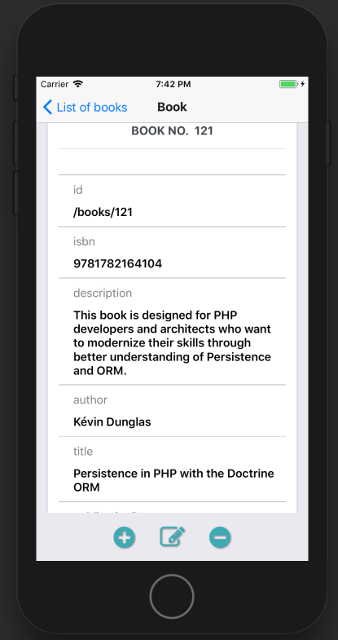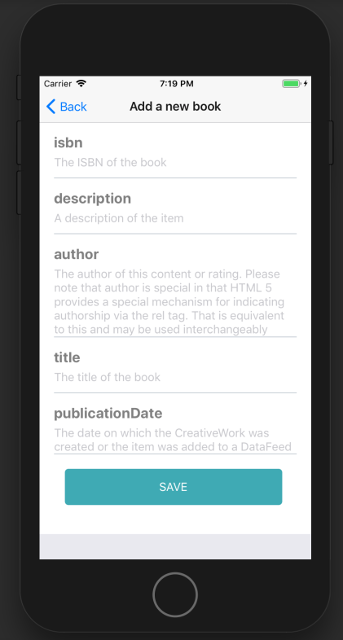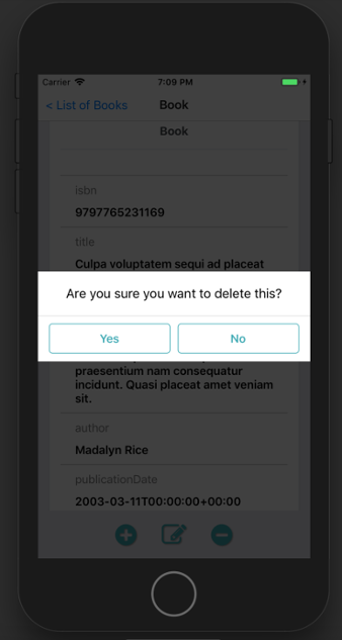React Native generatorTable of Contents
Table of Contents

# Install
To use this generator you need Node.js.
Create a React Native application using Expo CLI:
npm install -g expo-cli
npm init expo-app my-app
When asked, choose to use the blank template, then move to the created directory:
cd my-app
Install the required dependencies:
npm install redux react-redux redux-thunk redux-form react-native-elements react-native-router-flux react-native-vector-icons prop-types whatwg-url buffer react-native-event-source react-native-gesture-handler react-native-reanimated react-native-screens
# Generating a Native App
In the app directory, generate the files for the resource you want:
npm init @api-platform/client https://demo.api-platform.com . -- --generator react-native --resource book
Replace the URL with the entrypoint of your Hydra-enabled API.
You can also use an OpenAPI documentation with -f openapi3.
Omit the resource flag to generate files for all resource types exposed by the API.
Create a Router.js file to import all routes:
// Router.js
import React from 'react';
import { Router, Stack } from 'react-native-router-flux';
// Replace "book" with the name of the resource type
import BookRoutes from './routes/book';
const RouterComponent = () => (
<Router>
<Stack key="root">{BookRoutes}</Stack>
</Router>
);
export default RouterComponent;Here is an example of an App.js file:
// App.js
import React, { Component } from 'react';
import { Provider } from 'react-redux';
import thunk from 'redux-thunk';
import { createStore, applyMiddleware, combineReducers } from 'redux';
import { View } from 'react-native';
import { reducer as form } from 'redux-form';
// see https://github.com/facebook/react-native/issues/14796
import { Buffer } from 'buffer';
global.Buffer = Buffer;
// see https://github.com/facebook/react-native/issues/16434
import { URL, URLSearchParams } from 'whatwg-url';
global.URL = URL;
global.URLSearchParams = URLSearchParams;
// see https://github.com/facebook/react-native/issues/12890
import RNEventSource from 'react-native-event-source';
global.EventSource = RNEventSource;
// Replace "book" with the name of resource type
import book from './reducers/book';
import Router from './Router';
export default class App extends Component {
render() {
const store = createStore(
combineReducers({
book,
form,
}),
{},
applyMiddleware(thunk)
);
return (
<Provider store={store}>
<View style={{ flex: 1 }}>
<Router />
</View>
</Provider>
);
}
}The code is ready to be executed!
expo start
# Screenshots in iOS Simulator




You can also help us improve the documentation of this page.
